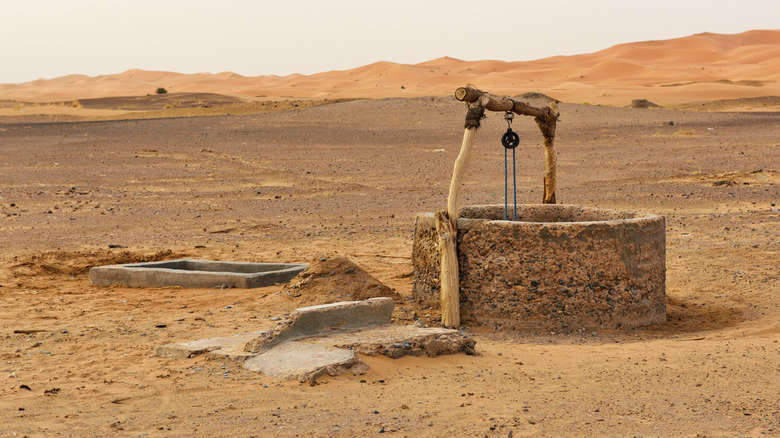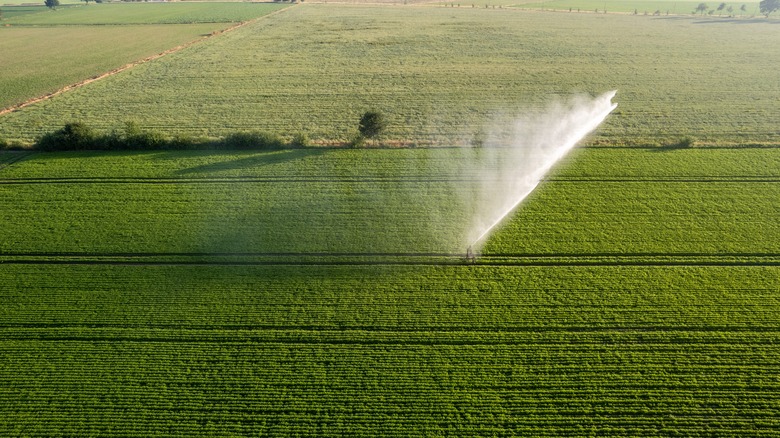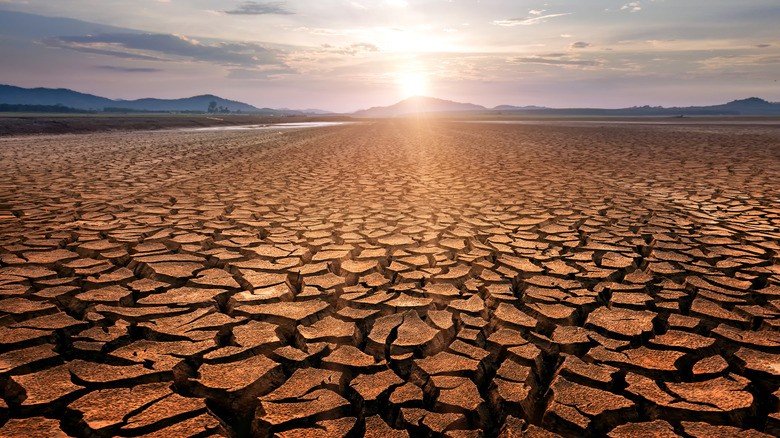The Role 'Invisible' Water Plays In Ending Global Hunger
You use much, much more water than you think you do. If you check in with the Environmental Protection Agency, they'll tell you the average American uses 82 gallons of water per day. That's about 310 liters for all of you who don't subscribe to America's rebellious systems of measurement. In reality, this estimate is low, like, really low. That number only considers household water consumption, factoring in your toilet, shower, sprinklers, and of course, the roughly 12-16 cups of water you should be drinking every day.
The statistics aggregator site The World Counts found that over 90% of our water consumption doesn't come from the tap, but rather in the form of "virtual water." That's the water required to produce all of the products we buy, and when you factor that into the equation, you realize that each global citizen uses an average of 3,800 liters, or 1,000 gallons, of water every single day.
Meeting that demand is a major challenge because, according to National Geographic, less than 3% of the planet's water is fresh and fit for human use. Of that fresh water, nearly 70% is locked in glaciers. Ultimately, surface freshwater — the stuff in lakes, rivers, and swamplands — only accounts for 0.3% of Earth's water. That's not nearly enough to meet the needs of a growing world, so we need backup, but we've left some fresh water unaccounted for. That brings us to the critical, "invisible" water source right beneath your feet.
Half the world relies on groundwater
According to the United States Geological Survey, there is over a thousand times more freshwater underground than in all the lakes and rivers of the world. Whenever it rains or snows, water sinks into the ground, filling pores and cracks in the rock much like a sponge. It hits an impermeable layer long before any liquid can approach the planet's core, so there are large swaths of water-saturated rock under almost every inch of the Earth's surface. These are called aquifers, per the USGS, and by tapping into aquifers, we can make wells and irrigation systems.
Today, UNESCO estimates that close to 50% of the world's drinking water comes from underground, as does about 40% of all water used in irrigation. Per the UN World Water Development Report, groundwater is most essential in rural areas where the vast majority of residents are not connected to a water supply system. In the back end of the 1900s, vast advancements were made in drilling and pumping technologies, helping to pull millions from poverty by expanding access to clean water, according to the Food and Agriculture Organization of the United Nations (FAO). The organization cautions that many of the world's most populous countries, including India and the United States, would struggle to feed themselves without tapping aquifers.
Threats to groundwater
As with all natural resources, we have taken groundwater for granted when we shouldn't have. The very expansions that lifted so many from poverty in the last century also depleted groundwater reserves at an alarming rate, says the FAO, noting that governments around the world have failed to mitigate, and in some cases even incentivized, overexploitation of groundwater.
The World Bank also criticizes governments and consumers for failing to invest in building and maintaining efficient water systems, exacerbating waste. This would be a big enough challenge if we were simply trying to sustain the world's current population, but the number of people on Earth is projected to reach 10 billion by 2050, and if you recall The World Count's concept of "virtual water," you'll understand what a demand that will place on our water supplies.
In addition to the rising population, the UN World Water Development Report notes that climate change is increasing our reliance on groundwater as reduced precipitation and high global temperatures dry up crops and surface water. The scientific journal Nature professes that the future of our water supply is grim, and there's no other way to spin it. Although nobody likes to face the implications of overpopulation, and what curbing it would require, Nature warns that there is simply not enough water, above or below ground, to sustain our present rate of growth.


